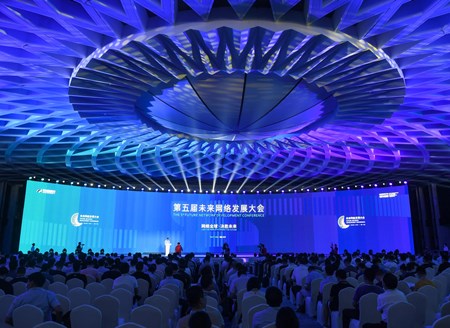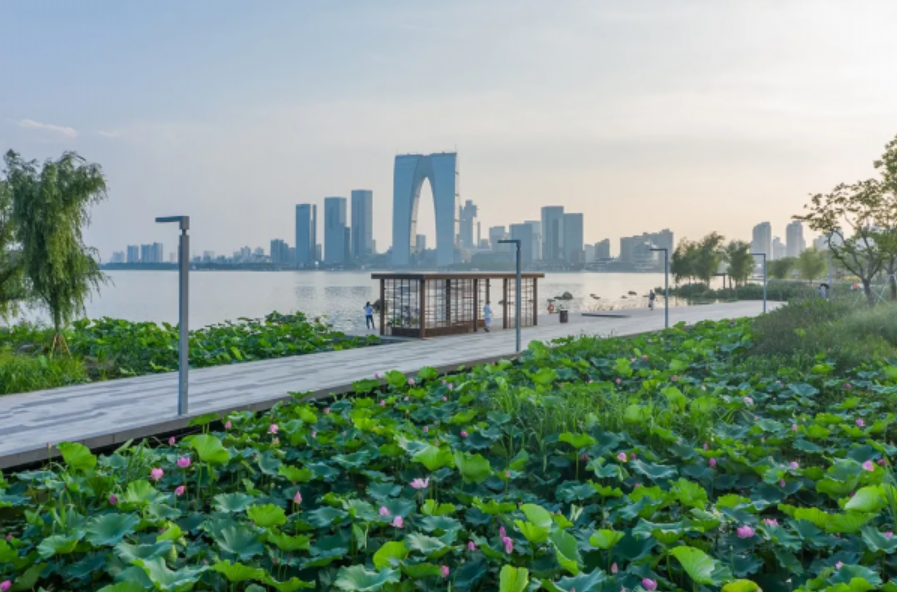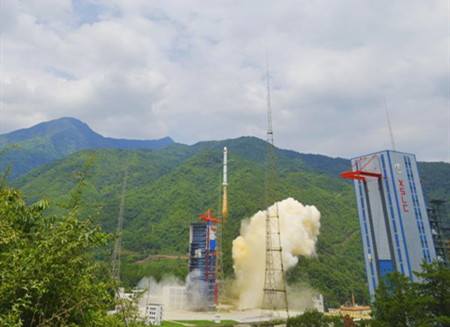* Due to the complex and largely mountainous terrain, transportation infrastructure has long been a bottleneck for development in Sichuan and other parts of China's western region.
* In recent years, however, with hefty government investment and rapid development in engineering technologies, a large number of mega projects have been completed in Sichuan, transforming the way people travel and boosting connectivity in once-isolated regions.
* Sichuan is making efforts to overcome technical difficulties and invest more in major projects, so as to benefit more people, said Luo Jiaming, Party secretary of the Sichuan provincial transportation department.
CHENGDU, Aug. 26 -- In late June, a mega bridge above the Jinyang River in southwest China's Sichuan Province opened to traffic after about four years of construction.
The 757.7-meter-long bridge was built about 238 meters above the riverbed, with the tallest pier reaching a rare height of 196 meters, equivalent to that of a 65-story building. It cuts the travel time between the old and new districts of Jinyang County to two minutes from more than an hour.
"I could never imagine standing on such a large bridge. Going between the old and new districts, we will never have to use the winding roads up and down the mountains again," said Hua Xu, a resident who has lived in Jinyang for more than 30 years.
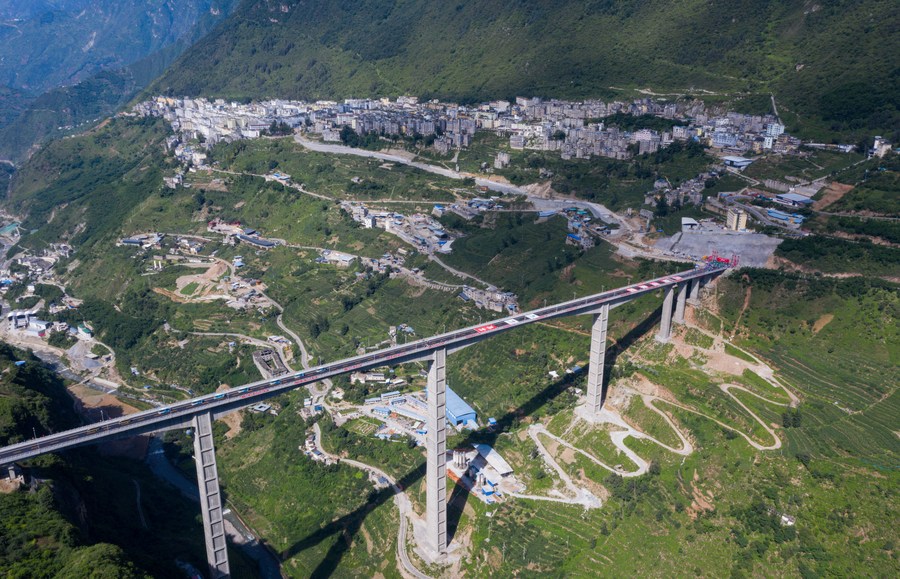
Aerial photo taken on June 30, 2022 shows a view of a mega bridge above the Jinyang River, which connects the old and new districts of Jinyang County, in southwest China's Sichuan Province. (Xinhua/Jiang Hongjing)
Due to the complex and largely mountainous terrain, transportation infrastructure has long been a bottleneck for development in Sichuan and other parts of China's western region.
In recent years, however, with hefty government investment and rapid development in engineering technologies, a large number of mega projects have been completed in Sichuan, transforming the way people travel and boosting connectivity in once-isolated regions.
Data shows that the annual investment in Sichuan's road and waterway construction has exceeded 100 billion yuan (14.6 billion U.S. dollars) for 11 consecutive years since 2011. The investment reached a record high of 215.8 billion yuan in 2021, up 12.5 percent year on year.
By the end of 2021, the total length of roads in Sichuan reached 399,000 km, ranking first in China. All townships and villages in the province had access to tarmac roads.
At present, several major highway and railway projects are under construction in Sichuan and the province plans to invest more than 1.2 trillion yuan in transportation construction in the next five years.
Sichuan is making efforts to overcome technical difficulties and invest more in major projects, so as to benefit more people, said Luo Jiaming, Party secretary of the Sichuan provincial transportation department.
ENGINEERING FEATS
In September 2014, Sichuan started the construction of the Ya'an-Kangding expressway. The expressway, though relatively short in length at about 135 km, required bridges and tunnels that accounted for 82 percent of its total mileage, which made investment for every kilometer of the expressway amount to more than 170 million yuan.
On Dec. 31, 2018, the expressway construction was completed nine months ahead of schedule, after engineering obstacles were conquered in two super projects -- the 13.5-km-long tunnel at Erlang Mountain and the 1.1-km-long Luding Dadu River Bridge.
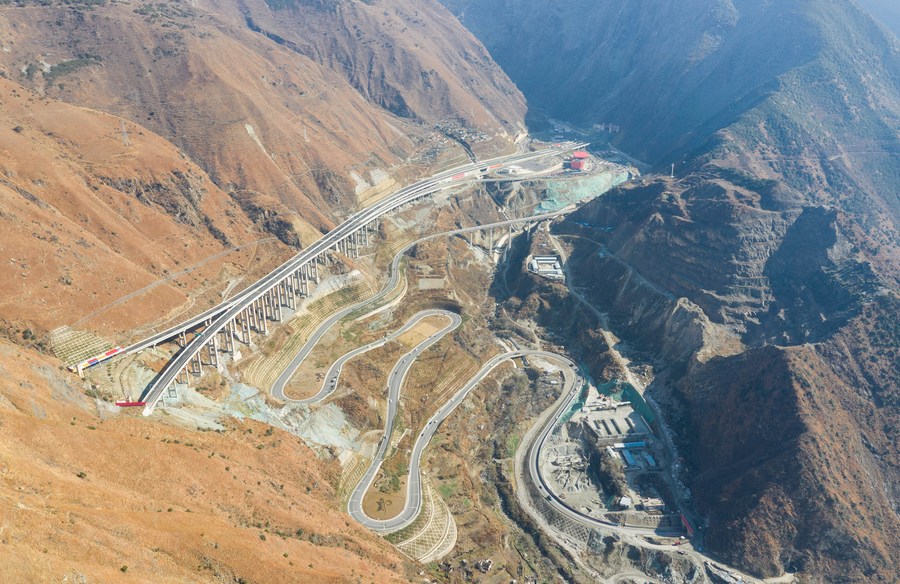
Aerial photo taken on Dec. 30, 2018 shows a section of the Ya'an-Kangding expressway in southwest China's Sichuan Province. (Xinhua/Jiang Hongjing)
At 3,437 meters above sea level, the Erlang Mountain has long been seen as a formidable natural barrier for people traveling to the Qinghai-Tibet Plateau. At the beginning of the 21st century, a tunnel was built through the mountain, reducing the travel time by three hours.
The new tunnel on the Ya'an-Kangding expressway, which was built 700 meters lower in altitude than the old tunnel and below the snow line, will no longer be affected by bad weather.
"We have overcome many technical problems in the project. The tunnel goes through 13 regional earthquake fault zones, and its construction took protecting groundwater and panda habitats into consideration," said Zheng Jianguo, an engineer who designed the tunnel.
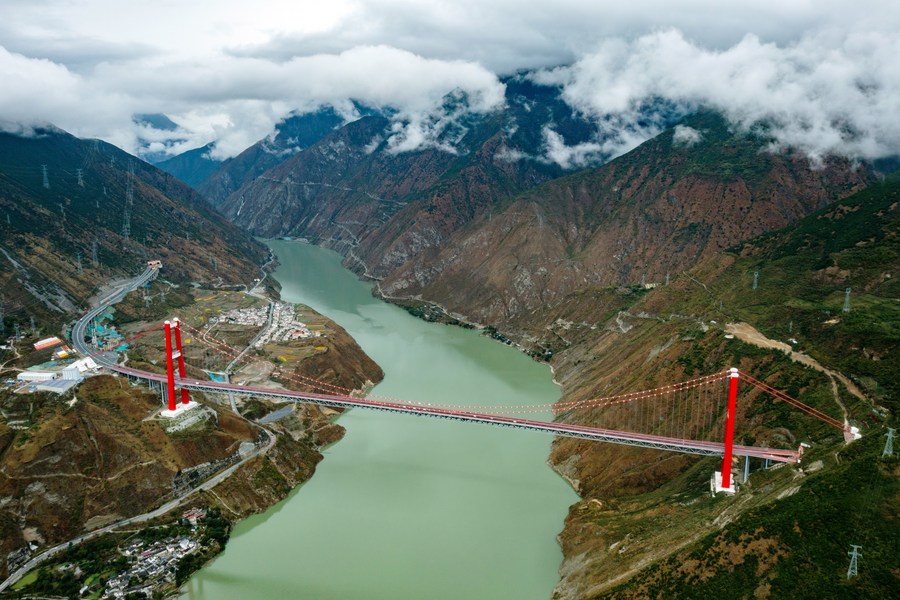
Aerial photo taken on Oct. 21, 2021 shows the Luding Dadu River Bridge on the Ya'an-Kangding expressway in southwest China's Sichuan Province. (Xinhua/Shen Bohan)
The Luding Dadu River Bridge, a super-long-span steel truss suspension bridge, is another engineering feat. Its main deck is composed of 57 large sections of steel girders, with the maximum lifting weight of a single section topping about 200 tonnes and the total lifting weight exceeding 10,000 tonnes. It was extremely difficult to build under complex wind conditions.
"On the bridge deck, which is 239 meters above the Dadu River, the maximum instantaneous wind speed could be equivalent to a typhoon," said Mou Tingmin, an engineer with the Sichuan provincial transportation department.
"When we first got here, there was nothing but cliffs and crags," recalled Bai Guosheng, one of the first engineers who arrived at the construction site.
ROAD TO PROSPERITY
The opening of Ya'an-Kangding expressway has greatly facilitated the travel of people living along the route, and promoted the development of local industries.
A transport company in Tibetan Autonomous Prefecture of Garze in Sichuan spent more than 20 million yuan purchasing over 30 buses, and opened direct bus routes from Chengdu, the provincial capital of Sichuan, to several tourist spots along the expressway.
"The launch of the expressway has significantly improved the experiences of the tourists and expanded their travel range," said Xie Bingguo, general manager of the company.
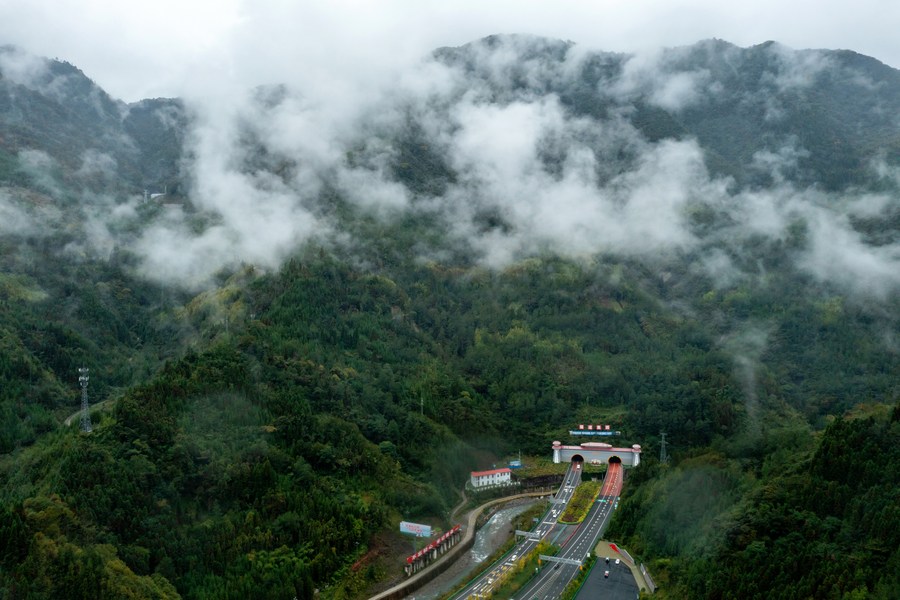
Aerial photo taken on Oct. 21, 2021 shows an entrance of the 13.5-km-long tunnel at Erlang Mountain, a super project on the Ya'an-Kangding expressway, in southwest China's Sichuan Province. (Xinhua/Shen Bohan)
In recent years, tourist arrivals in Garze increased by more than 10 million and tourism revenue by 10 billion yuan every year.
"As more tourists arrived, we converted our house into a five-room guesthouse," said Garze resident Tsering Chudrong. "Our whole family used to make less than 30,000 yuan a year, but now we make 300,000 yuan."
The expressway has also provided the locals with better logistics services and a wider market for matsutake, plateau fruits and vegetables, and other local specialties.
In Xinglong Township of Garze, a saffron planting base of 200 mu (about 13.3 hectares) has taken shape, with a total revenue expected to surpass 14 million yuan.
"The opening of the expressway helped solve logistics problems, prompting more companies from outside the area to make investments," said Liu Xianhu, Party secretary of Heping Village in Xinglong. "When more tourists come, more produce from the farms is sold."


